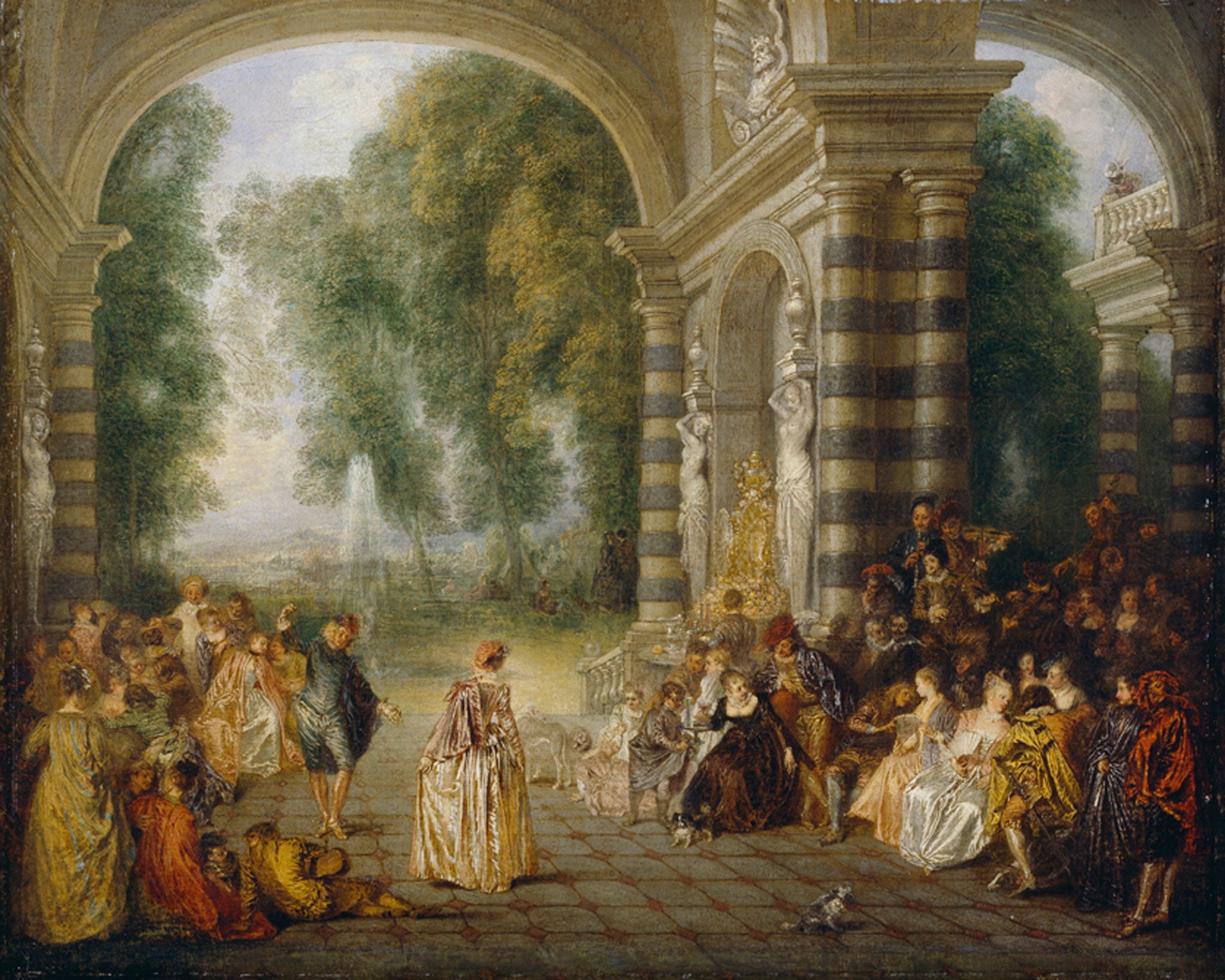Great works: Les Plaisirs du Bal (The Pleasures of the Dance) c. 1715-17 by Jean-Antoine Watteau
Dulwich Picture Gallery

Count the number of individual participants, some to the left of the magnificent, forever unknowable creature who poses almost at centre stage with her back to us, fanning out her dress, and many to the right. That detail – the turned back – seems to say as much as needs to be said by way of a summary of this curiously evanescent scene which appears, as John Constable once remarked, to be painted with honey. By which I mean that it tells us remarkably little. All this, finally, is as inscrutable as it is alluring. It is all surface brilliance, like a sheet of beaten gold.
No, it is not easy to count them all. We try and then we try again. Creatures bob and weave, appear then disappear. The picture as we see it today at the Dulwich Picture Gallery, hanging hugger-mugger with several others on the same wall, is dark, almost nocturnal in its mysterious atmosphere.
The image on this page may suggest otherwise. Perhaps it needs cleaning. Are there in excess of 60 individuals? It is not easy to tell. They merge and they blend. It is not so much a mass as an entire host of semi-private gatherings. Many of them are in little huddles of two, engaged in private conversations, whispered tête-à-têtes, closely attended by a fussy little, toy-like lap dog or two. Yet we are not too close. In fact, we are perhaps to be counted amongst the privileged voyeurs.
It is an exquisite scene, in dream-time, of near perfect idling; studied frivolity, rendered fantastical by this elaborate architectural framing, which suggests the architecture of the Palais du Luxembourg. The fountain, carelessly spewing forth its vaporous waters, draws our eye through and beyond to some paradisal rural landscape. Those arching architectural features seem to expand the scene, aggrandise its frivolity. They also emphasise, in their proscenium-archness, its sheer theatricality. It is a ball of sorts, but no one is dancing, not really.
One instrument is stilled and lies across a lap as the instrumentalist turns aside to tickle the fancy of an appealing companion. Such movement towards the dance that exists at all – the man (in blue satin?) facing us who is flexing his left leg as he raises his arms in invitation – is more a slow-motion, coming-into-being of movement. Is he mimicking the opening steps of a dance or coaxing one into being? It all takes place against this chequerboard-like floor, which seems to throw up the possibility that these two are mechanical dolls, forever doomed to move in slow time to the lonely, poignant chimes of a musical box.
A couple of years ago, there was an exhibition of Watteau's drawings at the Royal Academy. That show consisted of movements towards such a compendious scene as this one. It included many studies – poses, character types (the hurdy-gurdy man, the Savoyard), and, perhaps most engaging of all, an entire sheet of drawings, exhibited for the first time ever, of a left hand – holding a cane, a coin. All the exquisite draughtsmanship that you saw in that show fed into such a painting as the one on this page.
This is not a generalised scene. It is a brilliant accretion and compacting of superbly individualised smallnesses. And perhaps the most brilliant aspect of it of all is the way that he has caught the sheen and the sparkle, the slightly harsh and almost crackly metallic glitter, of the many different costumes.
About the artist: Jean-Antoine Watteau (1684-1721)
Watteau may have been born in October 1684 in the city of Valenciennes, in northern France. His parentage was modest. By the age of 18, he had moved to Paris and was working for a picture-dealer on the Pont Notre-Dame, copying the same picture by Gerrit Dou – of an old, bespectacled woman reading – day in, day out. He moved house repeatedly and never married. He was modest, shy, restless, unimposing and tubercular, hence his relatively early death.
Subscribe to Independent Premium to bookmark this article
Want to bookmark your favourite articles and stories to read or reference later? Start your Independent Premium subscription today.

Join our commenting forum
Join thought-provoking conversations, follow other Independent readers and see their replies